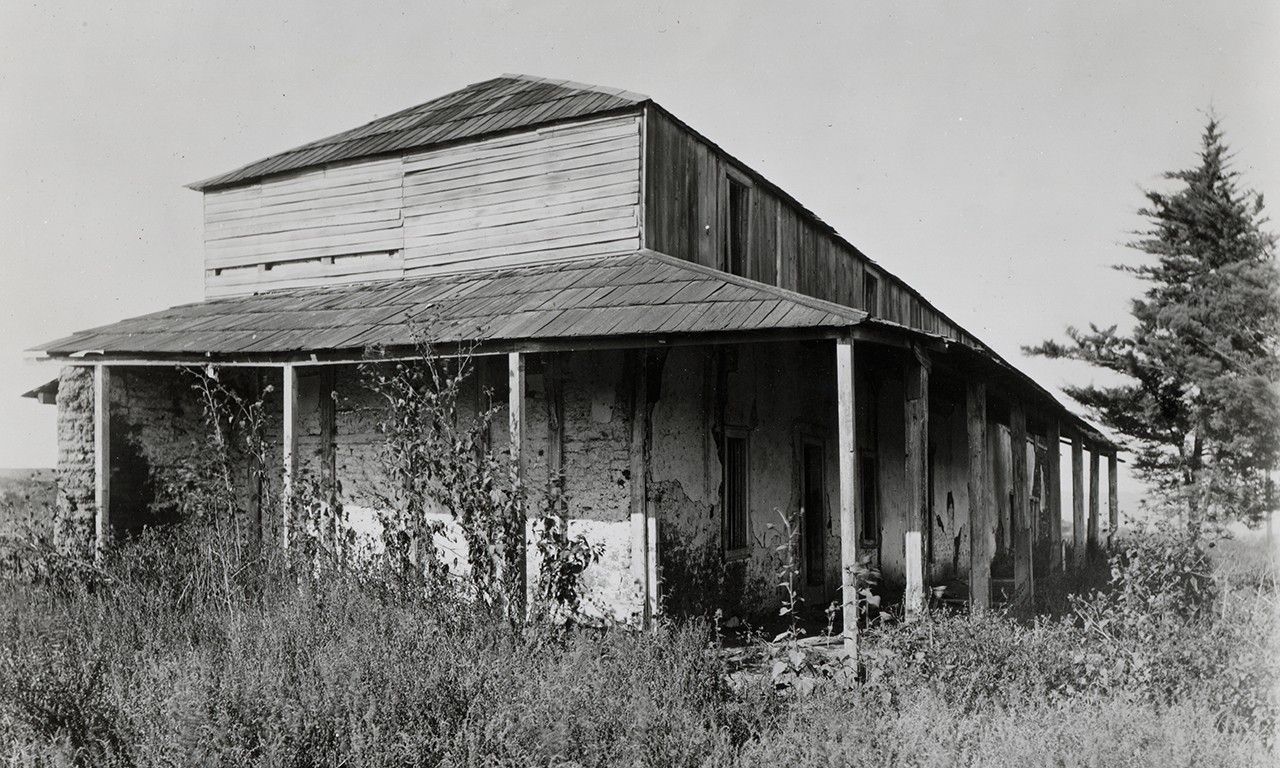 |
Don Bernardo Yorba’s House, c. 1910
Unknown Photographer; Santa Ana Canyon, California
Photographic print; 8 x 10 in.
8478
Terry E. Stephenson Collection |
Variations of a City
In both Forged in Fire Safety: The First Santa Ana Fire Department and A Beginner’s Guide to Santa Ana Street Names the Bowers Blog has previously looked at the early history of the City of Santa Ana—when parcels of land were purchased by the pioneer and developer William Henry Spurgeon in 1869—but the story begins long before. In this 6th post celebrating Santa Ana’s Sesquicentennial, we explore how a land grant given by a Spanish king evolved over almost a century before it was purchased by Spurgeon. The complex prehistory of the city is evidenced by buildings, key people and even the torrid legal disputes of some of the early land owners.
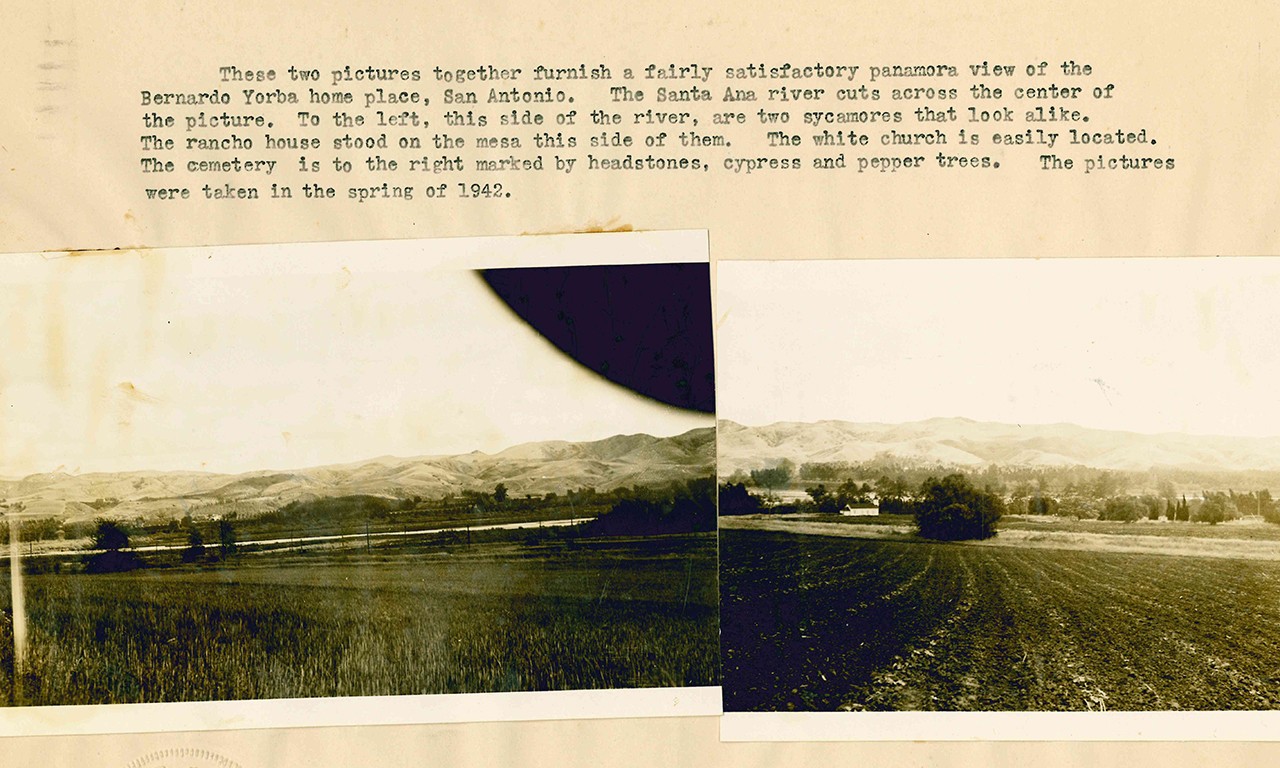 |
Bernardo Yorba Adobe, 1942-1943
Terry E. Stephenson; Santa Ana, California
Paper and ink; 8 ½ x 11 in.
6255a
Terry E. Stephenson Collection |
The First Grant
Between 1769 and 1773, Don José Antonio Yorba I (Spanish, 1746-1825) assisted an expedition to explore present-day California. For his work, the Spanish governor of Alta California awarded Yorba with the Rancho Santiago de Santa Ana, a 48,000-acre land grant that encompasses modern-day Santa Ana, Orange, Tustin, Olive, El Modena and Costa Mesa. Yorba shared this land grant with his nephew, Juan Pablo Peralta, as Spanish rule required land grants to be given under the name of two families. This article clipping from the Bowers collection shows parts of the grant along the Santa Ana River.
|
|
Portrait of Don Bernardo Yorba, c. 1850
Henri Pénelon (French, 1827-1885)
Oil on canvas, gilt frame; 24 ½ x 19 ¾ x 1 ¼ in.
5070
Gift of Mrs. Herman Locke and Bernardo Marcus Yorba, Jr. |
Mary P. Scully, November 1, 1939
Orpha Mae Klinker (American, 1891-1964)
Pastel, cardboard and paper; 24 ½ x 31 in.
8465
Gift of Orpha Mae Klinker |
A Family Affair
After Yorba and Peralta’s deaths, their heirs inherited vast amounts of the land grant. Yorba’s son, Don Bernardo Yorba, shown above, lived on a rancho located in modern-day Santa Ana. Much of the Peralta family owned and lived on the south part of present-day Santa Ana Canyon. Ramon Peralta, Juan Pablo Peralta’s son, built the adobe that is currently the oldest standing adobe in Santa Ana Canyon on his share of the land in 1871. Another inheritor, Mary P. Scully, inherited portions of the land from her father, Thomas Scully, and mother, Maria de Jesus Scully, the daughter of Don Bernardo Yorba. Miss Scully, also above, was one of the few direct inheritors of the land grant and remained in possession of the land for the rest of her life. Eventually, various settlers exploring present-day California bought portions of the Rancho through deals and exchanges.
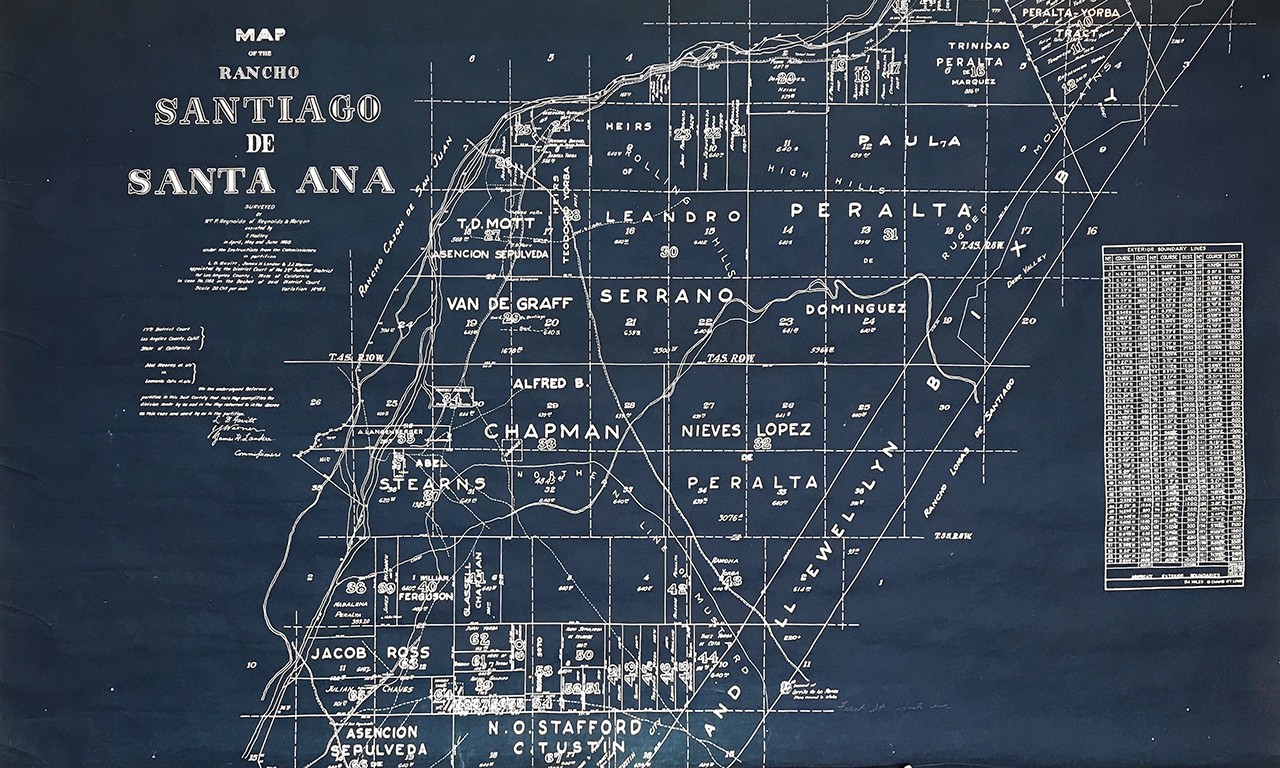 |
Map of the Great Partition, 1868
Orange County Title Company; Santa Ana, California
Ink on paper; 24 x 20 in.
95.35.3
Gift of Dr. Raymond R. Ross |
The Big Suit
Though simple land exchanges worked seamlessly for everyone involved with the grant, trouble eventually shifted to the distribution of land for the heirs and new landowners. Abel Stearns, a landowner and debt collector, lent money to Leonardo Cota, a Yorba family land owner. Stearns sued Cota after Cota was unable to pay Stearns back. The major lawsuit altered the distribution of the Rancho completely as Stearns attempted to gain land portions equivalent to Cota’s debt. Since the land was still one large parcel that hadn’t been legally divided since the initial Rancho land grant, the court had to decide how to divide the land so that Stearns could seize the part of the land equivalent to Cota’s debt. After two years, the court split the land grant completely between the heirs and landowners. Rancho Santiago de Santa Ana, the first Spanish land grant in present-day Orange County, was officially split into 72 portions in 1868. In what was known as the Great Partition, the land was divided between new and old landowners as the map above shows. Ironically, Stearns did not gain enough land from the split to help him out of his ever-growing debt, though he would eventually become one of the biggest landowners in California.
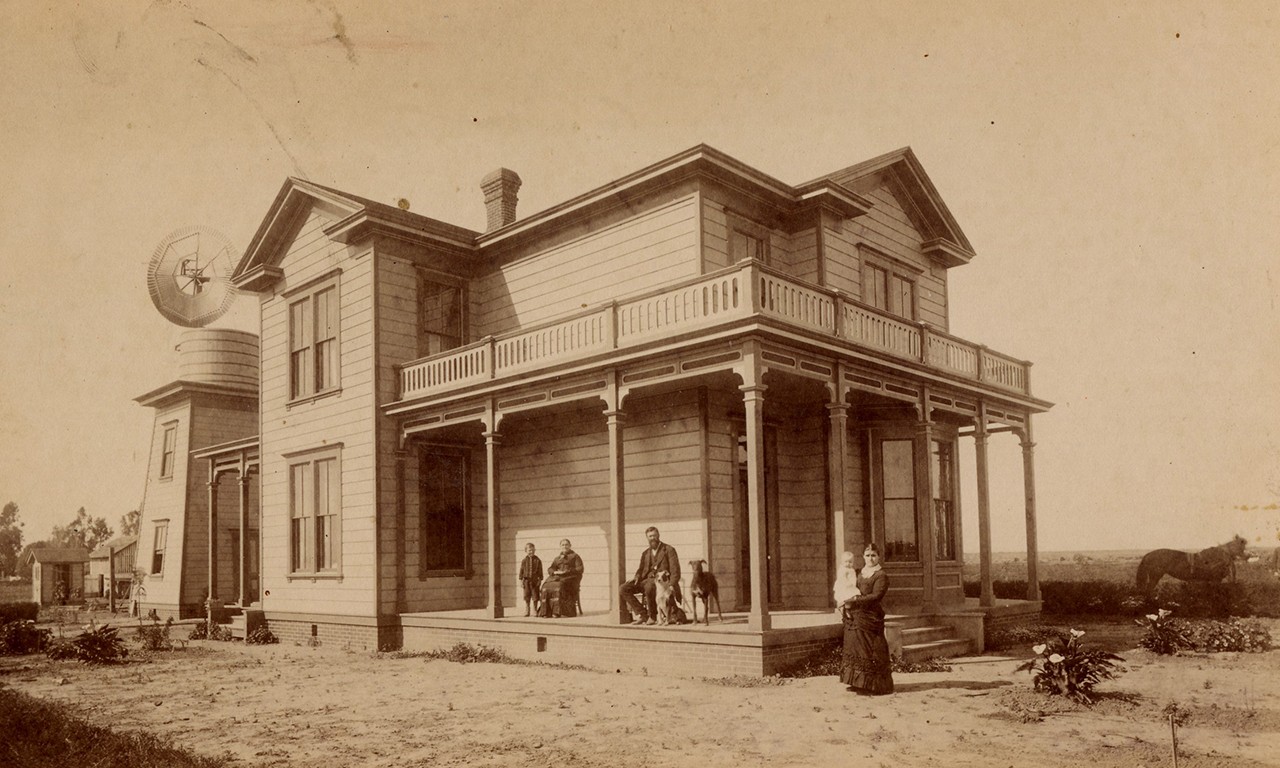 |
Ross Family Home, c. 1885
The Garden City Photo Company; Santa Ana, California
Print and sepia; 5 ¼ x 8 ½ in.
31422.1
Gift of Mrs. Don C. Edwards |
A Whole New World
The partition set a path to the creation of present-day Santa Ana as newly divided land began to draw lines for Orange County cities. Jacob Ross and his family moved from Northern California to the Rancho as portions of the land were being sold. The Great Partition split eventually left the Ross family with even more land. Shown below is the Ross family house built in 1879. The house still stands on 1020 North Baker St. in Santa Ana, though it has been renovated several times since. The Rosses ultimately sold a portion of their land to William H. Spurgeon who went on to be a major pioneer in the creation of modern-day Santa Ana.
Post researched and guest written by Yasmine Ghazipour, Intern for the Bowers Museum Collections Department. Text and images may be under copyright. Please contact Collection Department for permission to use. References are available on request. Information subject to change upon further research.



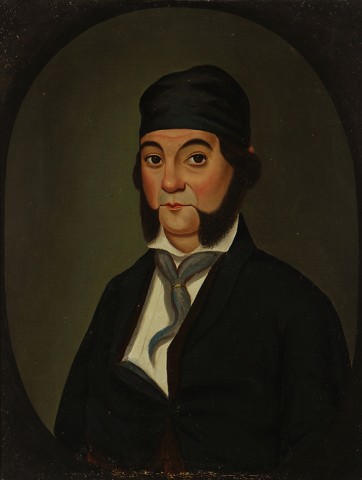
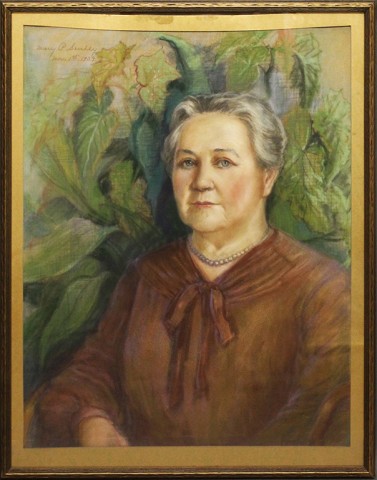


Comments